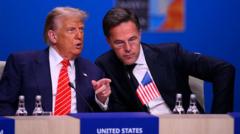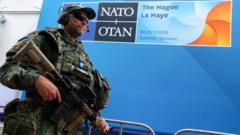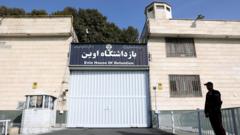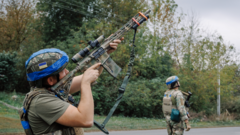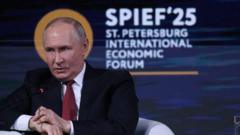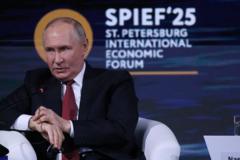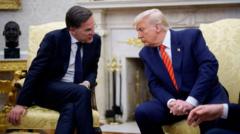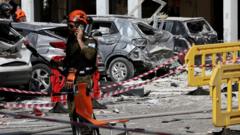General Oleksandr Syrskyi has announced that Ukrainian forces have successfully halted the recent Russian advances in the northeastern Sumy region. However, he emphasized the critical need for more fortifications to secure the area against ongoing threats.
Ukrainian Forces Regain Ground in Sumy Amid Ongoing Russian Pressure
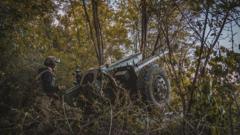
Ukrainian Forces Regain Ground in Sumy Amid Ongoing Russian Pressure
Ukrainian military leader reports stabilization of frontline, but warns of urgent need for fortifications in the Sumy region.
Ukrainian military leader, General Oleksandr Syrskyi, has recently indicated that the Ukrainian army has successfully halted Russian advances in the northeastern border region of Sumy, a crucial area bordering Russia. During a visit to the front lines on Thursday, he stated that combat lines had been "stabilised" and described the Russian summer offensive in the region as being "choked off."
Despite these positive developments, Gen Syrskyi highlighted the pressing need for additional fortifications to protect the region. His insights aligned with remarks from other Ukrainian officials, suggesting that the intensity of Russian pressure in Sumy has been decreasing. Nonetheless, Border Guard spokesperson Andriy Demchenko cautioned that the situation in the area remains "volatile."
Sumy shares a border with the Russian region of Kursk, part of which Ukrainian forces seized in a surprise offensive last year, only to be largely expelled months later. This previous incursion proved embarrassing for Russia, prompting President Vladimir Putin to announce plans aimed at creating "security buffer zones" to bolster defenses along its border with various Ukrainian regions.
Since then, Moscow has renewed efforts to advance in Sumy. In May, Ukrainian President Volodymyr Zelensky mentioned that around 50,000 of Russia's most formidable troops were stationed along the border, aiming to establish a 10-kilometer buffer zone.
Criticism has arisen over the perceived lack of fortifications in certain sections of the Sumy region. Gen Syrskyi attempted to address these concerns, asserting the necessity for reinforced defenses, which include "kill zones" and anti-drone corridors to better safeguard troops and improve logistics. While he acknowledged the immediate need for efficient fortification improvements, he expressed that the quality and speed of construction had to improve significantly.
At the beginning of the Russian invasion in February 2022, inadequate fortifications in various Ukrainian areas expedited Russian advances. Analysts from DeepState have reported ongoing combat in less fortified sectors of Sumy, stressing that the lack of essential fortifications has reached a point that cannot be overlooked.
In a recent forum, President Putin admitted that while Russia does not have a specific objective to capture Sumy, he does not dismiss the possibility, claiming a buffer zone of 8-12 kilometers has already been established.
As Russia’s full-scale invasion enters its fourth year, large-scale drone attacks on Ukrainian cities, including Kyiv, are on the rise, overwhelming air defense systems and causing significant casualties. Although recent talks have resulted in notable prisoner exchanges between Ukraine and Russia, there have been no substantial strides towards a ceasefire.
This week, NATO Secretary-General Mark Rutte announced that European and Canadian allies had pledged €35 billion to support Ukraine. Nevertheless, uncertainties linger in Kyiv regarding U.S. President Donald Trump's commitment to Ukraine, especially given his inconsistent relationship with President Zelensky. Following a recent interaction at a NATO summit, Trump hinted at the possibility of supplying Kyiv with U.S. Patriot air defense missiles to counter Russian threats.


